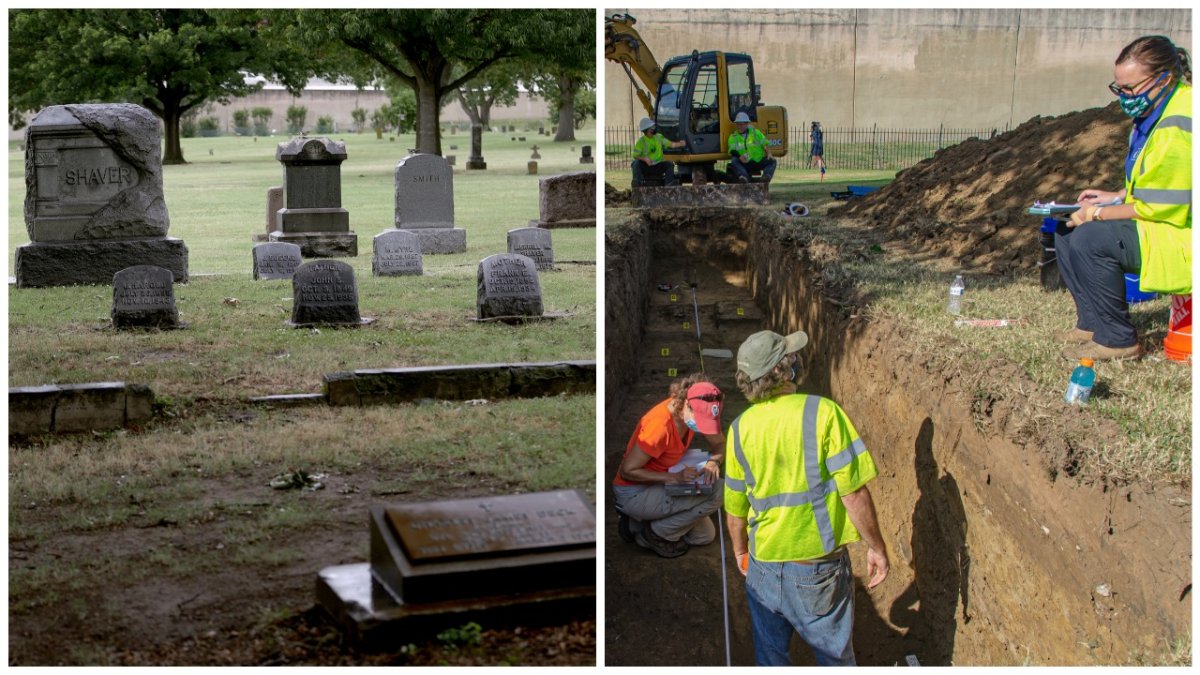Yesterday, a century after the tragic events of the 1921 Tulsa Race Massacre, a committee dedicated to investigating what has been left behind by history convened to further discuss findings from last year.
The Public Oversight Committee for the 1921 Tulsa Race Massacre Graves Investigation met virtually at 6 p.m and focused the meeting on DNA analysis. Dr. Robert Allen, Professor of Forensic Sciences at Oklahoma State University, explained the process of testing and extracting information from genetic markers being used to determine who was found buried in the cemetery.
The remains being analyzed were first uncovered last year as part of an initiative that was announced in 2018 by Mayor G.T. Bynum to "reexamine the potential of graves from the 1921 Tulsa Race Massacre as identified in the 2001 State commissioned report,"according to the City of Tulsa website.
"The only way to move forward in our work to bring about reconciliation in Tulsa is by seeking the truth honestly," Bynum said in a city press release.
In June 2020, Bynum declared that archaeologists would excavate a portion of the Oaklawn Cemetery "in an effort to locate remains of Black residents who were killed during the Black Wall Street Massacre of 1921." (also known as the 1921 Tulsa Race Massacre)
The Public Oversight Committee for the 1921 Tulsa Race Massacre Graves Investigation then met and identified four areas to reexamine and, as per an investigation report from December 2020, Oaklawn Cemetery was one of those four areas. Upon excavation, 12 wooden coffins were unearthed in October. They have yet to be affirmatively identified as remains of those victimized in the massacre.
At Thursday's meeting, one concern posed by Jessica Cerezo-Román, an assistant professor at the department of anthropology at the University of Oklahoma, included access to proper means of DNA testing.
"DNA will not be well preserved and we could have contamination issues," Cerezo-Román said. "A laboratory specializing in ancient DNA could deal effectively with contamination and preservation issues, I consider a normal DNA laboratory will not effectively extract or amplify the DNA."
The committee announced that they will be digging again in June.
Oklahoma State Archaeologist Kary Stackelbeck and her team, speaking of Oaklawn Cemetery, said that they are confident "that this is one of those areas we have been looking for."
"It does correspond to one of the locations that were picked up on by the geophysical survey work, "Stackelbeck told local news KTUL in October 2020 after the initial discovery.
A city news release later stated: "The area where remains were found has been previously referenced as the Original 18 site, located adjacent to two 1921 race massacre headstones in the historically African American section of the Potters Field.
Funeral home records and other documents for 1921 show that at least 18 identified and unidentified African American massacre victims were buried in the City-owned cemetery."
According to the latest report by the city of Tulsa, stairs were identified at the west end of the Original 18 area and the archaeologists believe that these "stairs were cut into the natural soil to provide access into and out of the mass grave trench."
Considering the total area exposed during the test excavations, the report states that there is a possibility "that at least 30 individuals were buried within the mass grave."
If mass graves are present and can be directly associated with the 1921 Tulsa Race Massacre, "the City of Tulsa with the help of the Public Oversight Committee, must determine the next steps as it relates to storing remains, DNA testing, and genealogical research, and commemorating the gravesites and honoring the remains."

Uncommon Knowledge
Newsweek is committed to challenging conventional wisdom and finding connections in the search for common ground.
Newsweek is committed to challenging conventional wisdom and finding connections in the search for common ground.
About the writer
To read how Newsweek uses AI as a newsroom tool, Click here.








